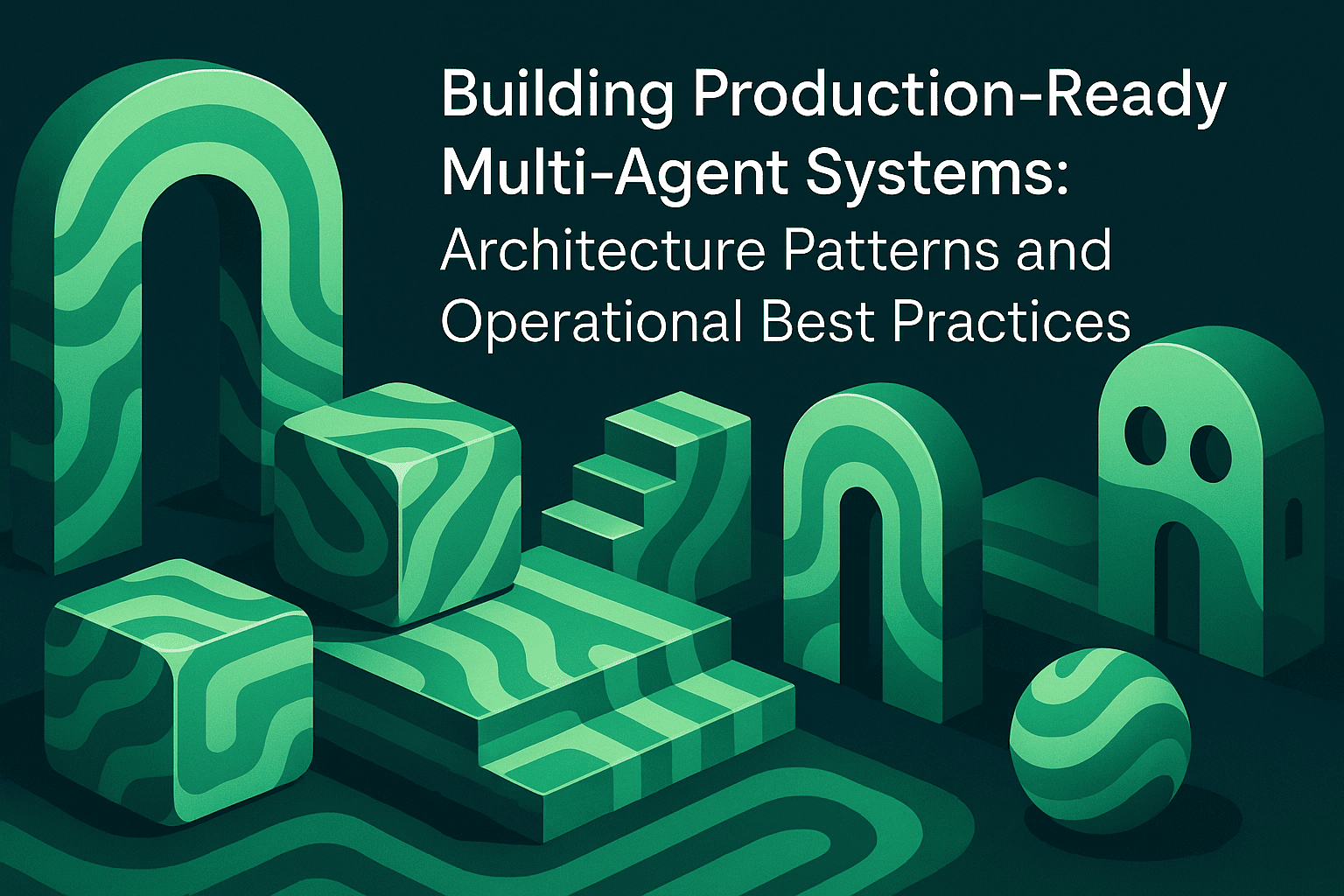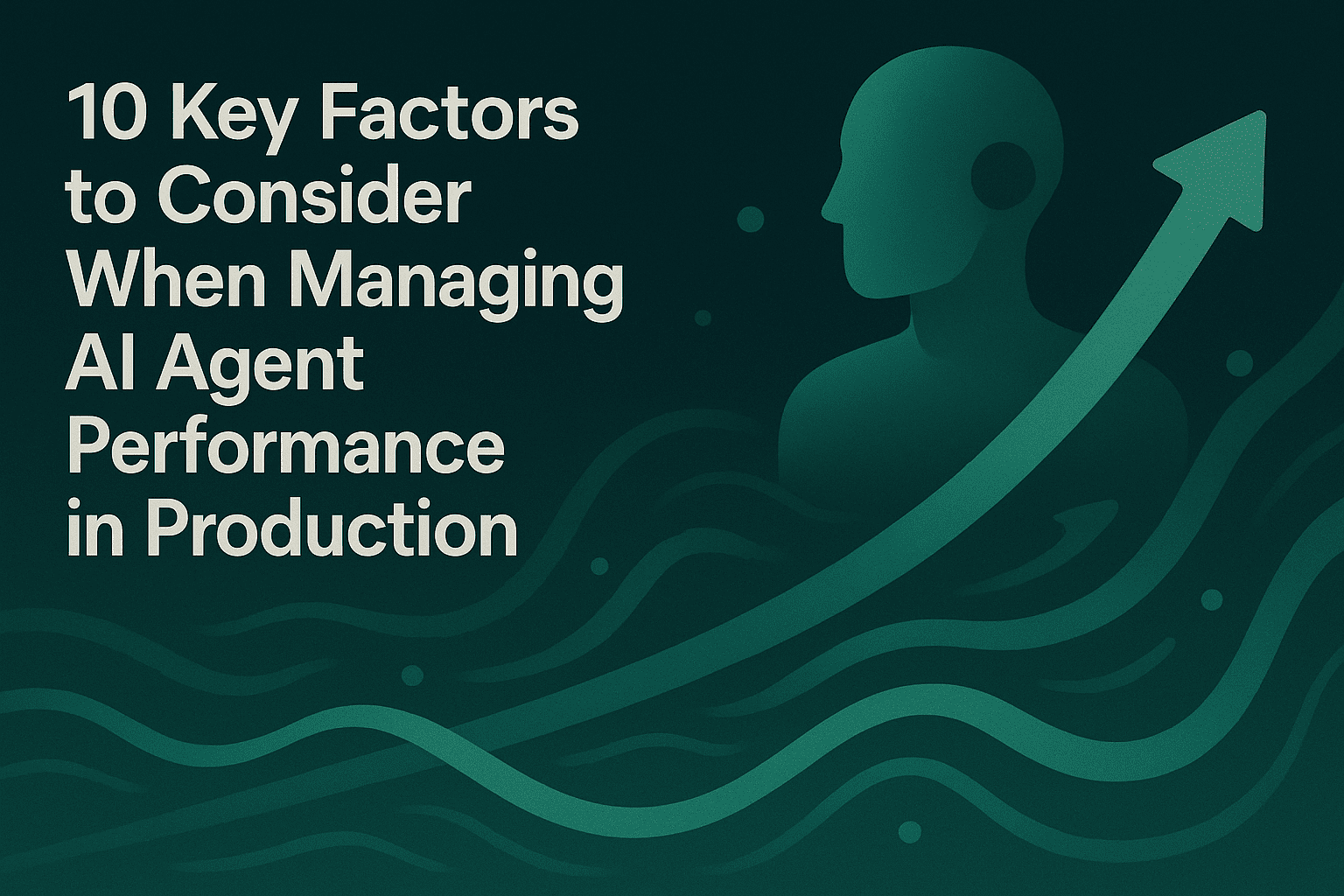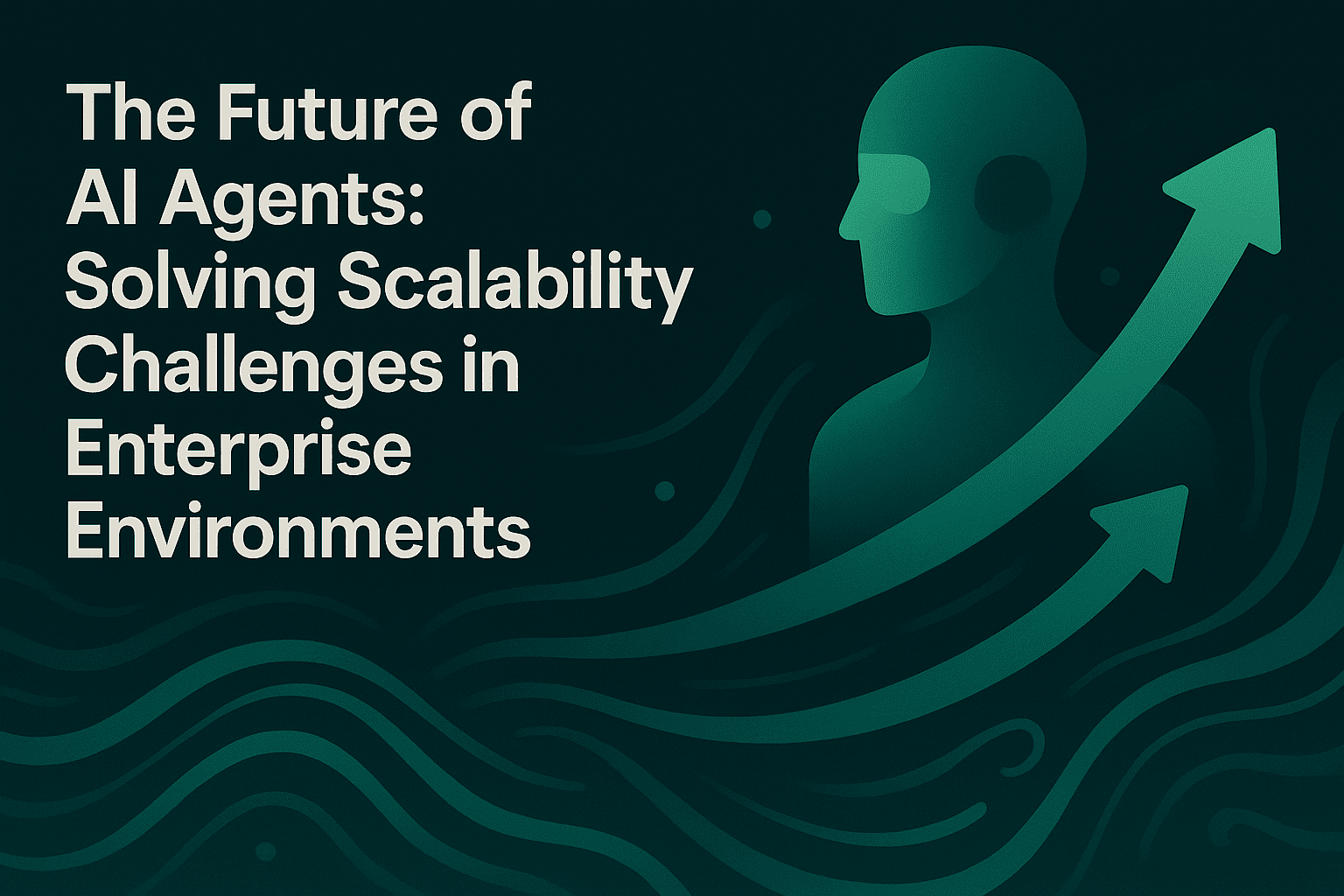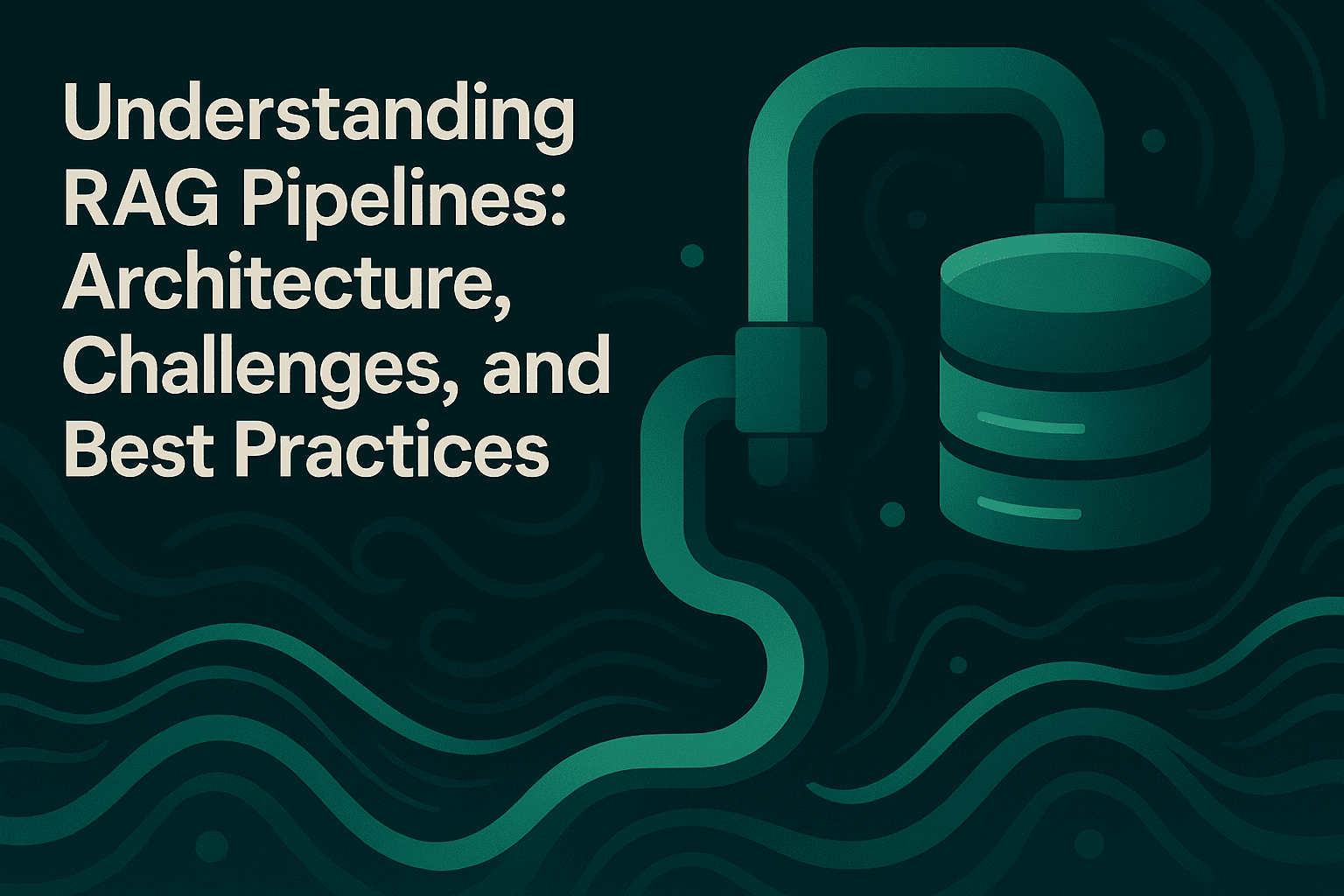Building Production-Ready Multi-Agent Systems: Architecture Patterns and Operational Best Practices

Multi-agent systems represent a fundamental shift in how AI applications handle complexity. When a single large language model cannot efficiently process multiple concurrent tasks, distributing work across specialized agents becomes necessary. However, this distribution introduces coordination overhead, failure dependencies, and monitoring challenges that require careful architectural planning.
This guide examines the engineering decisions required to build reliable multi-agent systems in production. We analyze four core architecture patterns, evaluate their operational characteristics, and provide implementation strategies for teams deploying agent-based applications at scale.
The Coordination Problem in Multi-Agent Systems
The primary engineering challenge in multi-agent systems is not the individual agent capability but the coordination mechanism between agents. Three critical factors determine system behavior:
Communication Overhead: As agent count increases, inter-agent communication can dominate execution time. Research from Stanford's HAI research on multi-agent systems shows that coordination overhead grows non-linearly with agent count. Systems with poor coordination design spend more time orchestrating than executing meaningful work.
State Consistency: Distributed agents must maintain shared understanding of system state. Centralized state management ensures consistency but creates bottlenecks. Distributed state management enables parallelism but introduces synchronization complexity and potential conflicts.
Failure Propagation: In interconnected agent networks, failures cascade unpredictably. A single agent failure can block downstream agents, cause retry storms, or produce incomplete results. Production systems require explicit failure handling and recovery mechanisms.
Understanding these coordination challenges is essential before selecting an architecture pattern. The architecture determines how your system handles these fundamental tradeoffs.
Architecture Selection Framework
Choosing the right architecture requires analyzing your application's specific requirements across multiple dimensions. This framework helps teams make informed architectural decisions based on measurable criteria.
Workload Characteristics Analysis
Start by characterizing your application's workload patterns:
Task Independence: Highly independent tasks with minimal inter-task dependencies favor decentralized architectures. Tasks requiring frequent coordination or shared state benefit from centralized control. Measure task independence by analyzing how often agents must synchronize state or wait for other agents.
Execution Latency Requirements: Real-time applications requiring sub-second response times need different architectures than batch processing systems. Latency-sensitive applications benefit from architectures that minimize coordination hops and enable parallel execution paths.
Scale Requirements: Systems processing hundreds of concurrent requests require different designs than those handling occasional queries. Analyze your peak load, sustained throughput requirements, and growth projections. Agent observability data from production systems provides critical insights into actual usage patterns.
Operational Constraints
Production requirements significantly impact architectural choices:
Consistency Requirements: Strong consistency requirements where all agents must share identical state views necessitate centralized coordination. Applications tolerating eventual consistency gain performance through decentralized patterns. Define your consistency SLAs explicitly before choosing an architecture.
Failure Tolerance: Mission-critical systems requiring high availability need architectures without single points of failure. Applications with acceptable downtime windows can trade availability for simpler designs. Document your recovery time objectives (RTO) and recovery point objectives (RPO).
Monitoring and Debugging: Complex distributed systems are harder to debug than centralized systems. Consider your team's operational capabilities and tooling. Agent debugging capabilities become critical for troubleshooting production issues in distributed agent networks.
Architecture Pattern 1: Orchestrated Coordination
Orchestrated coordination uses a central agent to manage all inter-agent communication and task distribution. This pattern prioritizes consistency and debuggability over maximum throughput.
Implementation Characteristics
The orchestrator maintains complete system state and makes all routing decisions. Worker agents receive tasks, execute them, and return results to the orchestrator. No direct communication occurs between worker agents.
from typing import Literal, Dict, List
from langchain_openai import ChatOpenAI
from langgraph.types import Command
from langgraph.graph import StateGraph, MessagesState, START, END
class OrchestratorState(MessagesState):
task_results: Dict[str, any] = {}
pending_tasks: List[str] = []
def orchestrator(state: OrchestratorState) -> Command[Literal["data_agent", "analysis_agent", "report_agent", END]]:
"""
Central orchestrator analyzes state and routes to appropriate agent.
Implements retry logic and failure handling.
"""
model = ChatOpenAI(model="gpt-4")
# Analyze current state and determine next action
system_prompt = """You are a task orchestrator. Based on the current state,
decide which specialized agent should execute next. Consider:
- Which tasks are complete
- Which tasks are pending
- Dependencies between tasks
- Any previous failures requiring retry
"""
response = model.invoke([
{"role": "system", "content": system_prompt},
{"role": "user", "content": f"Current state: {state}"}
])
next_agent = response.content.get("next_agent", "END")
return Command(
goto=next_agent,
update={"pending_tasks": state["pending_tasks"]}
)
def data_agent(state: OrchestratorState) -> Command[Literal["orchestrator"]]:
"""Specialized agent for data retrieval operations."""
model = ChatOpenAI(model="gpt-4-mini")
# Execute data retrieval task
result = model.invoke(state["messages"])
# Store result and return to orchestrator
state["task_results"]["data_retrieval"] = result.content
return Command(
goto="orchestrator",
update={"task_results": state["task_results"]}
)
def analysis_agent(state: OrchestratorState) -> Command[Literal["orchestrator"]]:
"""Specialized agent for data analysis operations."""
model = ChatOpenAI(model="gpt-4")
# Perform analysis using retrieved data
analysis_result = model.invoke([
{"role": "system", "content": "Analyze the provided data"},
{"role": "user", "content": state["task_results"]["data_retrieval"]}
])
state["task_results"]["analysis"] = analysis_result.content
return Command(
goto="orchestrator",
update={"task_results": state["task_results"]}
)
def report_agent(state: OrchestratorState) -> Command[Literal["orchestrator"]]:
"""Specialized agent for report generation."""
model = ChatOpenAI(model="gpt-4-mini")
# Generate final report from analysis
report = model.invoke([
{"role": "system", "content": "Generate a comprehensive report"},
{"role": "user", "content": state["task_results"]["analysis"]}
])
state["task_results"]["final_report"] = report.content
return Command(
goto="orchestrator",
update={"task_results": state["task_results"]}
)
# Build orchestrated system
builder = StateGraph(OrchestratorState)
builder.add_node("orchestrator", orchestrator)
builder.add_node("data_agent", data_agent)
builder.add_node("analysis_agent", analysis_agent)
builder.add_node("report_agent", report_agent)
builder.add_edge(START, "orchestrator")
graph = builder.compile()
Operational Profile
Throughput Ceiling: Orchestrator processing capacity limits system throughput. Under load, the orchestrator becomes a bottleneck regardless of worker agent count. Monitor orchestrator latency and CPU utilization to identify saturation points.
Predictable Failure Modes: When the orchestrator fails, the entire system stops processing. However, this failure mode is predictable and straightforward to detect. Implement health checks and automated failover for the orchestrator component.
Debugging Advantages: All execution paths flow through the orchestrator, making request tracing straightforward. Agent tracing captures the complete execution sequence, simplifying root cause analysis for production issues.
Cost Efficiency: Zero duplicate work across agents keeps token consumption minimal. The orchestrator coordinates task distribution to prevent redundant LLM calls. This architecture provides the best cost efficiency for token-based pricing models.
Production Use Cases
Orchestrated coordination works well for:
- Customer support systems requiring consistent state across all interactions
- Financial transaction processing where consistency cannot be compromised
- Compliance-driven applications requiring audit trails for all decisions
- Systems with modest scale requirements (under 100 concurrent requests)
Architecture Pattern 2: Autonomous Agent Networks
Autonomous networks eliminate central coordination, allowing agents to communicate directly based on local information. This pattern maximizes throughput and fault tolerance at the cost of consistency guarantees.
Implementation Strategy
Agents make independent routing decisions based on their specialized knowledge domains. Each agent maintains local state and coordinates with peer agents through direct communication channels.
from typing import Literal, Set
from langchain_openai import ChatOpenAI
from langgraph.types import Command
from langgraph.graph import StateGraph, MessagesState, START, END
class AutonomousState(MessagesState):
visited_agents: Set[str] = set()
data_collected: Dict[str, any] = {}
def inventory_agent(state: AutonomousState) -> Command[Literal["pricing_agent", "shipping_agent", END]]:
"""
Inventory agent makes autonomous decisions about which peer to contact.
No central orchestrator governs these decisions.
"""
model = ChatOpenAI(model="gpt-4-mini")
# Check inventory and decide next action
inventory_check = model.invoke([
{"role": "system", "content": "Check inventory levels and route accordingly"},
{"role": "user", "content": state["messages"][-1].content}
])
state["visited_agents"].add("inventory_agent")
state["data_collected"]["inventory"] = inventory_check.content
# Agent autonomously decides routing based on inventory status
next_agent = "pricing_agent" if "in_stock" in inventory_check.content.lower() else "END"
return Command(
goto=next_agent,
update={
"visited_agents": state["visited_agents"],
"data_collected": state["data_collected"]
}
)
def pricing_agent(state: AutonomousState) -> Command[Literal["inventory_agent", "shipping_agent", END]]:
"""Pricing agent coordinates directly with inventory and shipping."""
model = ChatOpenAI(model="gpt-4-mini")
pricing_result = model.invoke([
{"role": "system", "content": "Calculate pricing and determine shipping needs"},
{"role": "user", "content": f"Inventory: {state['data_collected']['inventory']}"}
])
state["visited_agents"].add("pricing_agent")
state["data_collected"]["pricing"] = pricing_result.content
# Direct routing to shipping if needed
next_agent = "shipping_agent" if "requires_shipping" in pricing_result.content.lower() else "END"
return Command(
goto=next_agent,
update={
"visited_agents": state["visited_agents"],
"data_collected": state["data_collected"]
}
)
def shipping_agent(state: AutonomousState) -> Command[Literal["inventory_agent", "pricing_agent", END]]:
"""Shipping agent can route back to inventory or pricing as needed."""
model = ChatOpenAI(model="gpt-4-mini")
shipping_result = model.invoke([
{"role": "system", "content": "Determine shipping options and finalize order"},
{"role": "user", "content": f"Order data: {state['data_collected']}"}
])
state["visited_agents"].add("shipping_agent")
state["data_collected"]["shipping"] = shipping_result.content
return Command(
goto="END",
update={
"visited_agents": state["visited_agents"],
"data_collected": state["data_collected"]
}
)
# Build autonomous network
builder = StateGraph(AutonomousState)
builder.add_node("inventory_agent", inventory_agent)
builder.add_node("pricing_agent", pricing_agent)
builder.add_node("shipping_agent", shipping_agent)
builder.add_edge(START, "inventory_agent")
network = builder.compile()
Operational Considerations
Throughput Scaling: Linear scaling with agent count since no central bottleneck exists. Adding more agents directly increases processing capacity. However, monitor for emergent coordination overhead as network complexity grows.
Fault Isolation: Individual agent failures do not cascade to the entire system. Peer agents continue operating and route around failed components. Implement circuit breakers to prevent retry storms when agents become unavailable.
Consistency Challenges: Agents may develop inconsistent views of system state. Without central coordination, ensuring all agents agree on critical facts requires explicit synchronization protocols. Design your state model carefully to minimize synchronization requirements.
Monitoring Complexity: Distributed execution paths make request tracing more difficult. Agent observability must track requests across multiple agents without central coordination points. Implement distributed tracing with correlation IDs to track requests across the agent network.
Production Applications
Autonomous networks excel in:
- Real-time recommendation systems processing thousands of concurrent requests
- IoT device coordination where centralized control introduces unacceptable latency
- Content moderation systems requiring parallel processing across multiple detection models
- Applications requiring geographic distribution with regional autonomy
Architecture Pattern 3: Hierarchical Delegation
Hierarchical architectures organize agents into teams with supervisory agents coordinating each team. This pattern balances centralized control with distributed execution by introducing multiple coordination layers.
Team-Based Organization
Supervisor agents manage specialist teams, with a top-level coordinator managing supervisors. Each level abstracts complexity from the level above while maintaining coordination within its scope.
from typing import Literal
from langchain_openai import ChatOpenAI
from langgraph.graph import StateGraph, MessagesState, START, END
from langgraph.types import Command
# Data Collection Team
def data_supervisor(state: MessagesState) -> Command[Literal["api_agent", "database_agent", "file_agent", END]]:
"""Supervises data collection agents."""
model = ChatOpenAI(model="gpt-4-mini")
routing = model.invoke([
{"role": "system", "content": "Route data collection tasks to appropriate specialists"},
{"role": "user", "content": state["messages"][-1].content}
])
return Command(goto=routing.content.get("next_agent", "END"))
def api_agent(state: MessagesState) -> Command[Literal["data_supervisor"]]:
"""Handles external API data collection."""
model = ChatOpenAI(model="gpt-4-mini")
result = model.invoke(state["messages"])
return Command(goto="data_supervisor", update={"messages": [result]})
def database_agent(state: MessagesState) -> Command[Literal["data_supervisor"]]:
"""Handles internal database queries."""
model = ChatOpenAI(model="gpt-4-mini")
result = model.invoke(state["messages"])
return Command(goto="data_supervisor", update={"messages": [result]})
# Build data collection team
data_team_builder = StateGraph(MessagesState)
data_team_builder.add_node("data_supervisor", data_supervisor)
data_team_builder.add_node("api_agent", api_agent)
data_team_builder.add_node("database_agent", database_agent)
data_team_builder.add_edge(START, "data_supervisor")
data_team = data_team_builder.compile()
# Analysis Team
def analysis_supervisor(state: MessagesState) -> Command[Literal["statistical_agent", "ml_agent", END]]:
"""Supervises analysis agents."""
model = ChatOpenAI(model="gpt-4")
routing = model.invoke([
{"role": "system", "content": "Route analysis tasks to appropriate specialists"},
{"role": "user", "content": state["messages"][-1].content}
])
return Command(goto=routing.content.get("next_agent", "END"))
def statistical_agent(state: MessagesState) -> Command[Literal["analysis_supervisor"]]:
"""Performs statistical analysis."""
model = ChatOpenAI(model="gpt-4")
result = model.invoke(state["messages"])
return Command(goto="analysis_supervisor", update={"messages": [result]})
def ml_agent(state: MessagesState) -> Command[Literal["analysis_supervisor"]]:
"""Performs machine learning analysis."""
model = ChatOpenAI(model="gpt-4")
result = model.invoke(state["messages"])
return Command(goto="analysis_supervisor", update={"messages": [result]})
# Build analysis team
analysis_team_builder = StateGraph(MessagesState)
analysis_team_builder.add_node("analysis_supervisor", analysis_supervisor)
analysis_team_builder.add_node("statistical_agent", statistical_agent)
analysis_team_builder.add_node("ml_agent", ml_agent)
analysis_team_builder.add_edge(START, "analysis_supervisor")
analysis_team = analysis_team_builder.compile()
# Top-Level Coordinator
def top_coordinator(state: MessagesState) -> Command[Literal["data_team", "analysis_team", END]]:
"""Coordinates between teams."""
model = ChatOpenAI(model="gpt-4")
routing = model.invoke([
{"role": "system", "content": "Route high-level tasks to appropriate teams"},
{"role": "user", "content": state["messages"][-1].content}
])
return Command(goto=routing.content.get("next_team", "END"))
# Build hierarchical system
builder = StateGraph(MessagesState)
builder.add_node("top_coordinator", top_coordinator)
builder.add_node("data_team", data_team)
builder.add_node("analysis_team", analysis_team)
builder.add_edge(START, "top_coordinator")
builder.add_edge("data_team", "top_coordinator")
builder.add_edge("analysis_team", "top_coordinator")
hierarchical_system = builder.compile()
Performance Characteristics
Balanced Coordination: Multi-hop coordination through supervisors adds latency compared to direct communication. However, hierarchical organization reduces the coordination burden on any single agent. Monitor hop count and latency at each hierarchical level.
Team Parallelism: Teams operate in parallel, enabling higher throughput than purely centralized systems. Within teams, supervisors coordinate specialists efficiently. This two-level parallelism balances throughput and coordination overhead.
Partial Failure Handling: Team-level failures do not necessarily crash the entire system. The top coordinator can route around failed teams or retry with alternative teams. Implement timeout and retry logic at both supervisor and coordinator levels.
Organizational Alignment: Hierarchical structures map naturally to team organizations. Data teams, analysis teams, and reporting teams in your organization align with agent team structures. This alignment simplifies ownership and maintenance responsibilities.
Deployment Scenarios
Hierarchical delegation suits:
- Enterprise applications with complex multi-domain workflows
- Research platforms combining data collection, analysis, and reporting capabilities
- Healthcare systems requiring specialized agents for clinical, billing, and administrative domains
- Systems requiring 50-500 concurrent operations with complex interdependencies
Architecture Pattern 4: Hybrid Coordination Models
Hybrid models combine multiple coordination patterns within a single system. Strategic decisions requiring consistency use centralized coordination while tactical operations requiring speed use autonomous patterns.
Design Principles
Identify system boundaries where coordination patterns change. Critical operations requiring atomicity and consistency use orchestrated coordination. High-volume, low-criticality operations use autonomous coordination for maximum throughput.
Coordination Boundaries: Define explicit boundaries where control transitions between coordination patterns. Document which operations use which patterns and why. These boundaries become critical design and debugging points.
State Management: Centralized components maintain authoritative state for critical data. Autonomous components maintain local caches with eventual consistency. Design your state synchronization protocol to handle network partitions and delays.
Failure Handling: Different coordination zones require different failure handling strategies. Centralized zones use traditional retry and failover mechanisms. Autonomous zones use circuit breakers and graceful degradation.
Implementation Approach
from typing import Literal, Dict
from langchain_openai import ChatOpenAI
from langgraph.types import Command
from langgraph.graph import StateGraph, MessagesState, START, END
class HybridState(MessagesState):
critical_data: Dict[str, any] = {}
local_cache: Dict[str, any] = {}
coordination_mode: str = "centralized"
def main_orchestrator(state: HybridState) -> Command[Literal["transaction_agent", "autonomous_cluster", END]]:
"""
Main orchestrator handles critical operations centrally.
Routes non-critical operations to autonomous cluster.
"""
model = ChatOpenAI(model="gpt-4")
# Classify operation criticality
classification = model.invoke([
{"role": "system", "content": "Classify operation as 'critical' or 'routine'"},
{"role": "user", "content": state["messages"][-1].content}
])
if "critical" in classification.content.lower():
next_node = "transaction_agent"
state["coordination_mode"] = "centralized"
else:
next_node = "autonomous_cluster"
state["coordination_mode"] = "autonomous"
return Command(
goto=next_node,
update={"coordination_mode": state["coordination_mode"]}
)
def transaction_agent(state: HybridState) -> Command[Literal["main_orchestrator"]]:
"""Handles critical transactions with full orchestrator oversight."""
model = ChatOpenAI(model="gpt-4")
# Execute critical operation with strong consistency
result = model.invoke([
{"role": "system", "content": "Execute critical transaction with full validation"},
{"role": "user", "content": state["messages"][-1].content}
])
state["critical_data"]["transaction_result"] = result.content
return Command(
goto="main_orchestrator",
update={"critical_data": state["critical_data"]}
)
def autonomous_cluster(state: HybridState) -> Command[Literal["main_orchestrator", END]]:
"""
Autonomous cluster handles routine operations independently.
Makes local decisions without orchestrator oversight.
"""
model = ChatOpenAI(model="gpt-4-mini")
# Execute routine operation autonomously
result = model.invoke([
{"role": "system", "content": "Handle routine operation autonomously"},
{"role": "user", "content": state["messages"][-1].content}
])
state["local_cache"]["operation_result"] = result.content
# Autonomous decision to complete or escalate
if "escalate" in result.content.lower():
return Command(goto="main_orchestrator", update={"local_cache": state["local_cache"]})
else:
return Command(goto="END", update={"local_cache": state["local_cache"]})
# Build hybrid system
builder = StateGraph(HybridState)
builder.add_node("main_orchestrator", main_orchestrator)
builder.add_node("transaction_agent", transaction_agent)
builder.add_node("autonomous_cluster", autonomous_cluster)
builder.add_edge(START, "main_orchestrator")
hybrid_system = builder.compile()
Operational Complexity
Dual Monitoring: Monitor both centralized and autonomous components with appropriate metrics for each. Centralized components require latency and throughput metrics. Autonomous components require coordination overhead and consistency lag metrics.
Failure Mode Analysis: Understand how failures propagate across coordination boundaries. Test failure scenarios where centralized components fail, where autonomous components fail, and where boundary transitions fail. Agent simulation enables testing these failure scenarios before production deployment.
Performance Optimization: Optimize each coordination zone independently. Centralized zones benefit from caching and batching. Autonomous zones benefit from reducing synchronization requirements and increasing parallelism.
Production Monitoring and Quality Assurance
Multi-agent systems require specialized monitoring approaches beyond traditional application monitoring. The distributed nature and dynamic coordination patterns create unique observability challenges.
Distributed Tracing Requirements
Effective agent tracing must capture the complete execution path across all agents. Each request receives a unique correlation ID that propagates through the agent network. Traces must include timing data for each agent invocation, state transitions between agents, LLM token usage per agent, and error conditions at each coordination point.
Implement structured logging at agent boundaries to capture coordination patterns. Log entries should include agent identity, coordination mode, upstream and downstream agents, and decision rationale for routing choices.
Quality Evaluation Strategies
Agent evaluation must assess both individual agent performance and system-level coordination effectiveness. Evaluate whether individual agents produce correct outputs for their specialized tasks. Measure whether coordination between agents produces correct end-to-end results. Assess whether the system handles failure scenarios appropriately and whether performance meets latency and throughput SLAs.
Implement continuous evaluation pipelines that run test suites against production deployments. Use AI evaluation to automatically assess output quality across hundreds of test scenarios. Combine automated evaluation with human review for edge cases and ambiguous scenarios.
Cost Monitoring and Optimization
Multi-agent systems can generate substantial LLM API costs due to increased token usage across multiple agents. Monitor token consumption per agent, identify redundant LLM calls, measure cost per request, and analyze cost trends over time.
Implement token budgets at the request level to prevent runaway costs. Use model routing strategies to direct simple queries to smaller models while reserving larger models for complex reasoning tasks. LLM observability provides visibility into model usage patterns and cost optimization opportunities.
Conclusion: Building Reliable Multi-Agent Systems
Multi-agent systems enable solving complex problems that single agents cannot handle efficiently. However, the coordination overhead, monitoring complexity, and operational challenges require careful architectural planning and robust engineering practices.
Select your architecture based on workload characteristics, consistency requirements, scale targets, and team capabilities. Implement comprehensive monitoring and tracing from the beginning. Establish evaluation pipelines to measure quality continuously. Monitor costs and optimize token usage across your agent network.
Teams successfully deploying multi-agent systems invest in observability infrastructure before scaling to production. Maxim AI provides end-to-end capabilities for monitoring, evaluating, and optimizing multi-agent applications. Our platform enables teams to ship reliable agent systems faster through comprehensive agent tracing, automated quality evaluation, production monitoring, and cost optimization analytics.
Ready to build production-ready multi-agent systems? Start with Maxim AI to access the observability and evaluation tools that help teams deploy reliable agent applications at scale.


